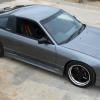Track Suspension...best Coil Over Kits!
Announcements
-
Similar Content
-
Latest Posts
-
lol no cats running str pipes … might put the high flow back on but I suspect it might effect my ignition timing a bit.
-
That looks a bit like yellowing to me. If the rear bar was looking like that from rich idle, I'd ask the question, do you have a catalytic converter fitted, and fully working?
-
Like my mirrors do here. Going to use a compound to treat them when it comes in dr beasley n45 …
-






Recommended Posts
Create an account or sign in to comment
You need to be a member in order to leave a comment
Create an account
Sign up for a new account in our community. It's easy!
Register a new accountSign in
Already have an account? Sign in here.
Sign In Now